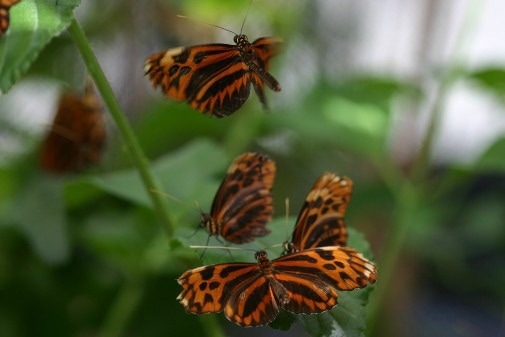According to research, non-edible butterfly species that imitate one another's color patterns have developed comparable flight movements as a means of alerting predators and evading extinction.
 The team looked specifically at a tribe of butterflies called the Heliconiini. Image Credit: University of York
The team looked specifically at a tribe of butterflies called the Heliconiini. Image Credit: University of York
It is commonly recognized that a large number of non-edible butterfly species have developed nearly identifiable color patterns that serve as alerts to potential predators, preventing the butterflies from being consumed.
It has now been demonstrated by researchers at the University of York that these butterflies have developed identical flight patterns in addition to similar color patterns, which combined provide a more potent warning to potential predators.
Researchers at the University of York measured the wing beat frequency and wing angles of 351 butterflies, representing 38 species that fall into one of ten different color pattern mimicry groups. They did this by using high-speed video footage to capture the flight of natural butterflies in South America.
Distant Relatives
Using this dataset, scientists looked into the relationships between habitat, wing shape, temperature, and the color pattern of the butterfly's “mimicry group” to determine which characteristics had the greatest impact on the butterfly's flight behavior.
The researchers discovered that contrary to expectations, the color pattern mimicry group a butterfly belonged to was the primary determinant of its flight behavior, even if the species’ habitat and wing shape also played a significant role.
This indicates that compared to closely related species that exhibit distinct warning coloring, distantly related butterflies that belong to the same color pattern mimicry group have more similar flight behavior. The butterflies would appear identical to a predator due to their color patterns, and they would likewise move in a similar way.
Nasty Taste
From an evolutionary perspective it makes sense to share the color pattern between species, to reduce the individual cost of educating predators to the fact that they do not taste nice! Once a predator has tasted one, the visual clues on others indicate that they too are also inedible, but flight patterns are more complex and are influenced by several other factors such as the air temperature and the habitat the species fly in.”
Edward Page, PhD Student and Study Lead Co-Author, Department of Biology, University of York
Edward Page said, “We wanted to see whether flight corresponded to color - could predators be driving the mimicry of flight as well as color patterns? We were surprised to find just how strong and widespread the behavioral mimicry is.”
70 Million Years Ago
The researchers focused on the Heliconiini, a tribe of butterflies found in the Neotropics that comprise over 100 species and subspecies, all of which belong to different groups that replicate different color patterns.
Additionally, they looked into a few species of ithomiine butterflies, which broke away from the Heliconiini some 70 million years ago but share striking similarities in their "Tiger" color patterns.
Sharing flight behavior across multiple species seems to reinforce this ‘do not eat me’ message. It is fascinating that this behavior has evolved between distant relatives over a long period of time, but we can also see flight behavior diverging between differently patterned populations within a species over a relatively short period of time too."
Edward Page, PhD Student and Study Lead Co-Author, Department of Biology, University of York
Subtle Changes
The extent of flight mimicry in this group of butterflies is amazing. It is a great example of how evolution shapes behavior, with selection from predators driving subtle changes which enhance the survival of individuals and the challenge and interest now is to identify the genes causing these changes, which will tell us how such behavioral mimicry evolves.”
Kanchon Dasmahapatra, Professor, Department of Biology, University of York
Source:
Journal reference:
Page, E., et al. (2024) Pervasive mimicry in flight behavior among aposematic butterflies. Proceedings of the National Academy of Sciences. doi.org/10.1073/pnas.2300886121